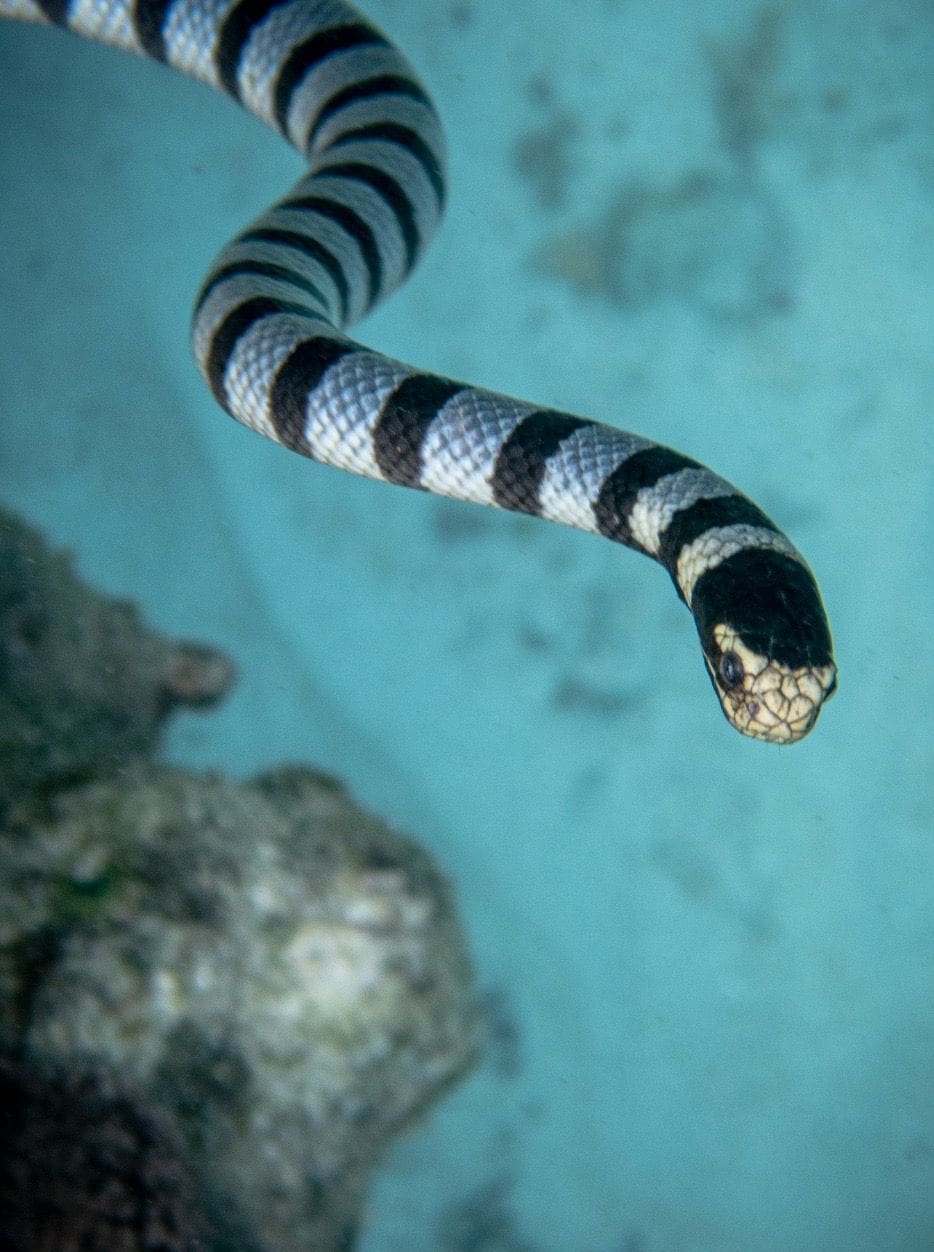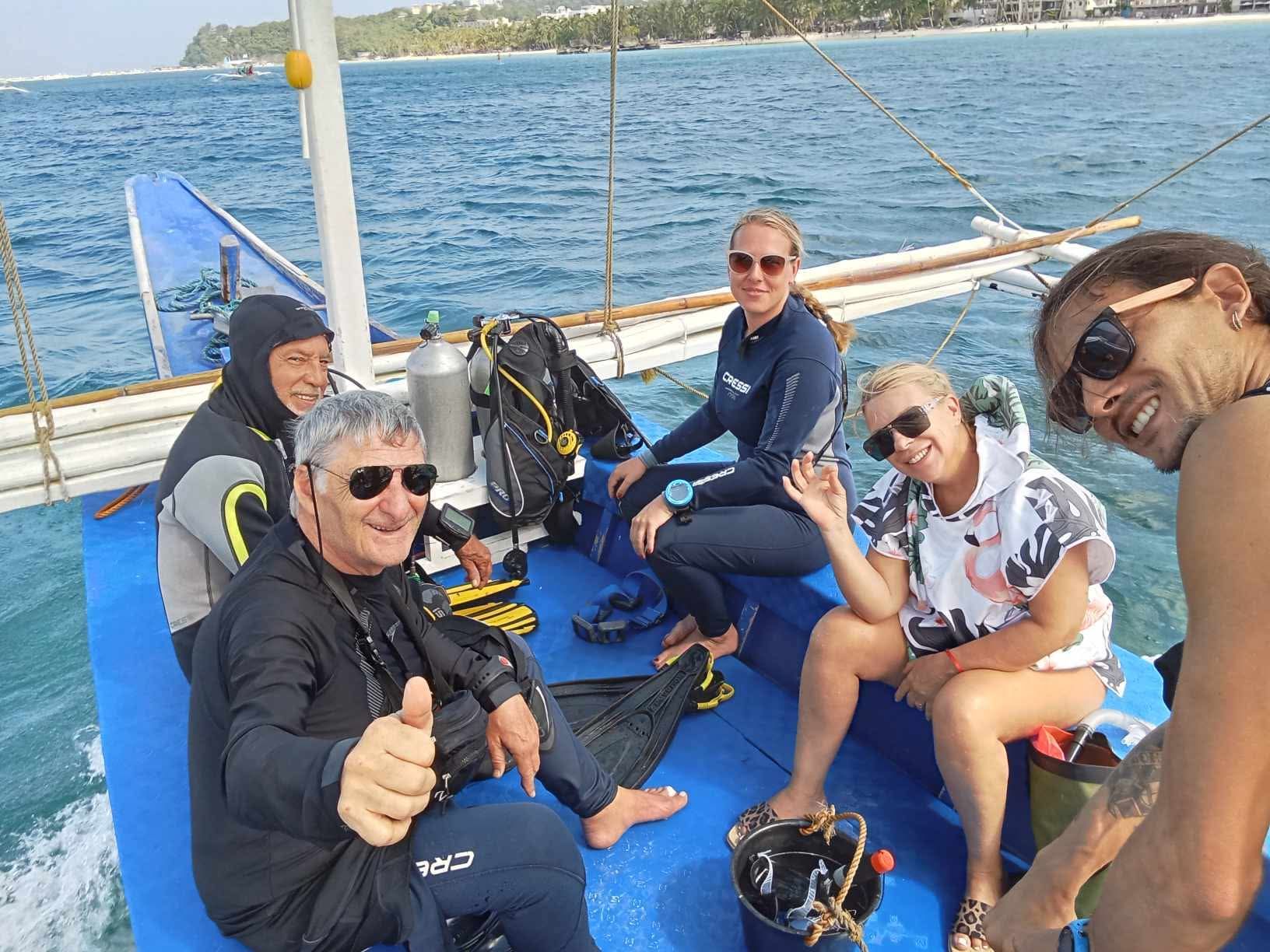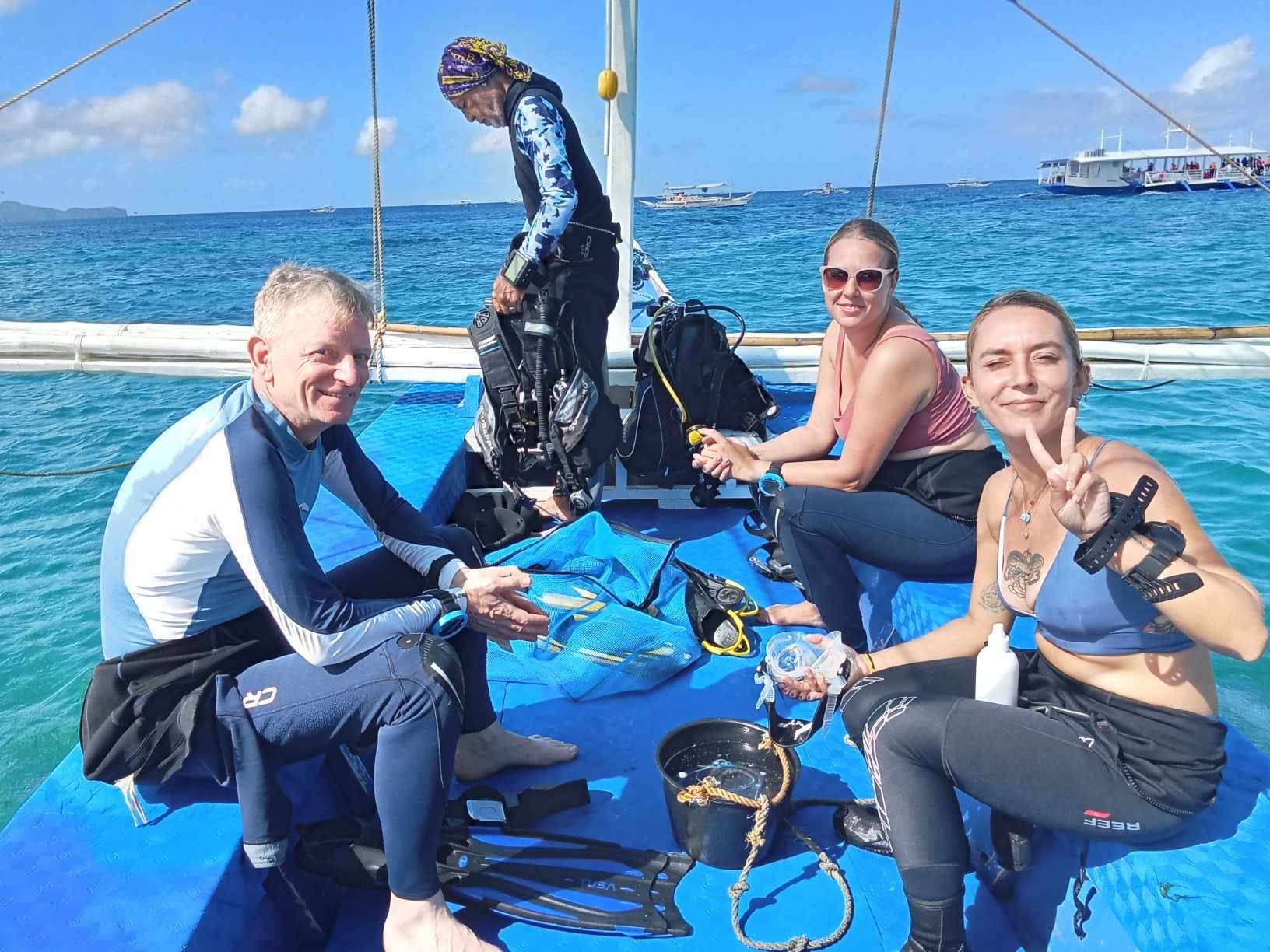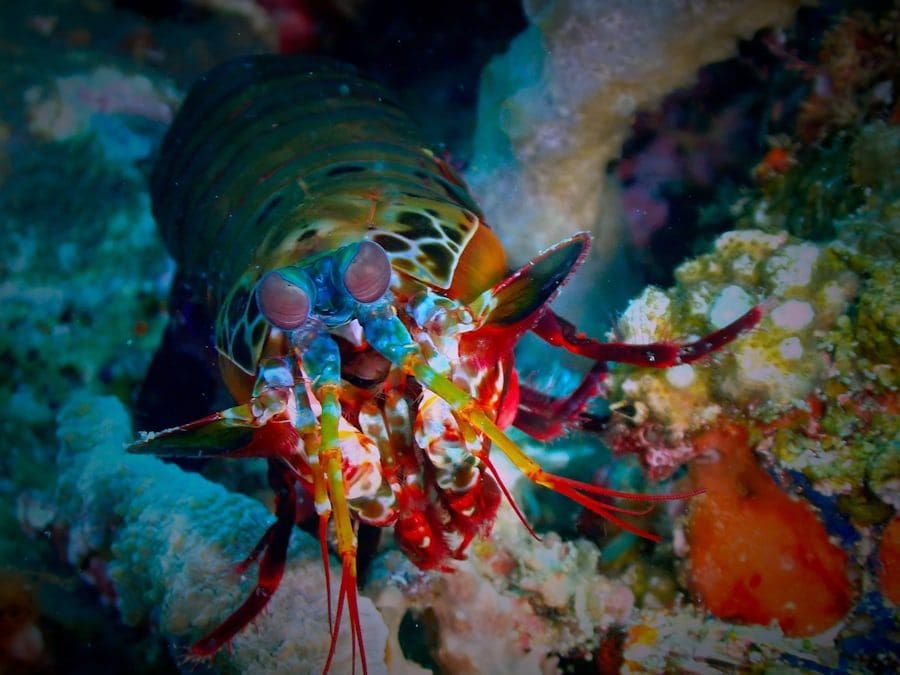The Rays of Boracay: Majestic Gliders of the Deep
Beneath Boracay’s crystal-clear waters lies an extraordinary world filled with vibrant reefs, fascinating marine life, and graceful, winged creatures gliding effortlessly through the blue—rays. These elegant fish, closely related to sharks, captivate divers with their sleek movements, unique patterns, and fascinating behaviors. From the small but striking blue-spotted stingrays to the majestic eagle rays that soar through deep water, Boracay’s dive sites offer fantastic opportunities to observe these underwater marvels.
Whether you’re a macro enthusiast searching for hidden stingrays or an adventure-seeking diver hoping to spot an eagle ray at depth, Boracay provides the perfect setting to witness these creatures in their natural habitat. Let’s dive into the different types of rays found in Boracay, where to see them, and why they play an essential role in the ocean’s ecosystem.
Meet the Rays of Boracay
1. Blue-Spotted Stingray (Neotrygon kuhlii)
🔵 Best Places to See Them: Santoson, Tambisaan Reef, Laguna, Crocodile Island
🔵 Size: Up to 35 cm (14 inches) in disc width
🔵 Depth Range: 5–30 meters (16–98 feet)
The blue-spotted stingray is one of Boracay’s most commonly sighted rays. These small but striking creatures feature bright blue spots on a sandy-colored body, making them easy to identify. Often found resting on sandy seabeds or partially hidden under coral ledges, they rely on camouflage to stay safe from predators.
💡 Fun Fact: When startled, they quickly dart away, stirring up sand as they vanish into the reef.
💡 Diver Tip: Look for them in shallow reef areas like Crocodile Island, where they often settle on the seabed between coral formations.
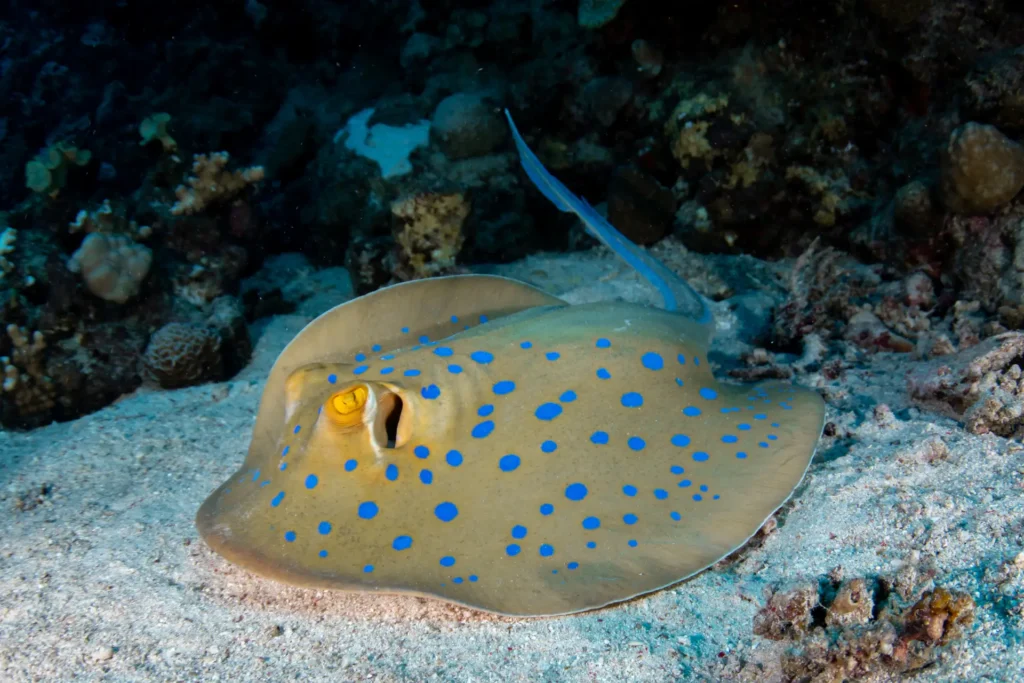
2. Blue-Spotted Ribbontail Ray (Taeniura lymma)
🌊 Best Places to See Them: Crocodile Island, Camia II Wreck, Channel Drift
🌊 Size: Up to 35 cm (14 inches) in disc width
🌊 Depth Range: 3–25 meters (10–82 feet)
Closely related to the blue-spotted stingray, the blue-spotted ribbontail ray is slightly larger and more vibrant, with an electric-blue tail and a more rounded body shape. These rays are more shy and reclusive, preferring to hide under rocky outcrops or coral formations.
💡 Diver Tip: When diving at Channel Drift, keep an eye on the sandy patches where these rays rest between coral heads.
3. Marble Ray (Taeniurops meyeni) (Rare Sightings)
⚫ Best Places to See Them: Yapak, Punta Bunga
⚫ Size: Can reach up to 3 meters (10 feet) in width
⚫ Depth Range: 30–60 meters (98–197 feet)
The marble ray, also known as the black-blotched stingray, is one of the largest stingrays found in the Indo-Pacific. Unlike smaller stingrays, these giants are powerful swimmers and prefer deeper waters. They are rare in Boracay, but experienced divers venturing into deep-wall dive sites like Yapak may be lucky enough to see one.
💡 Fun Fact: Marble rays have a long, venomous tail spine that serves as a defense mechanism against predators.
💡 Diver Tip: To increase your chances of spotting one, drift dive along the deep walls of Yapak and scan the sandy seabed below.
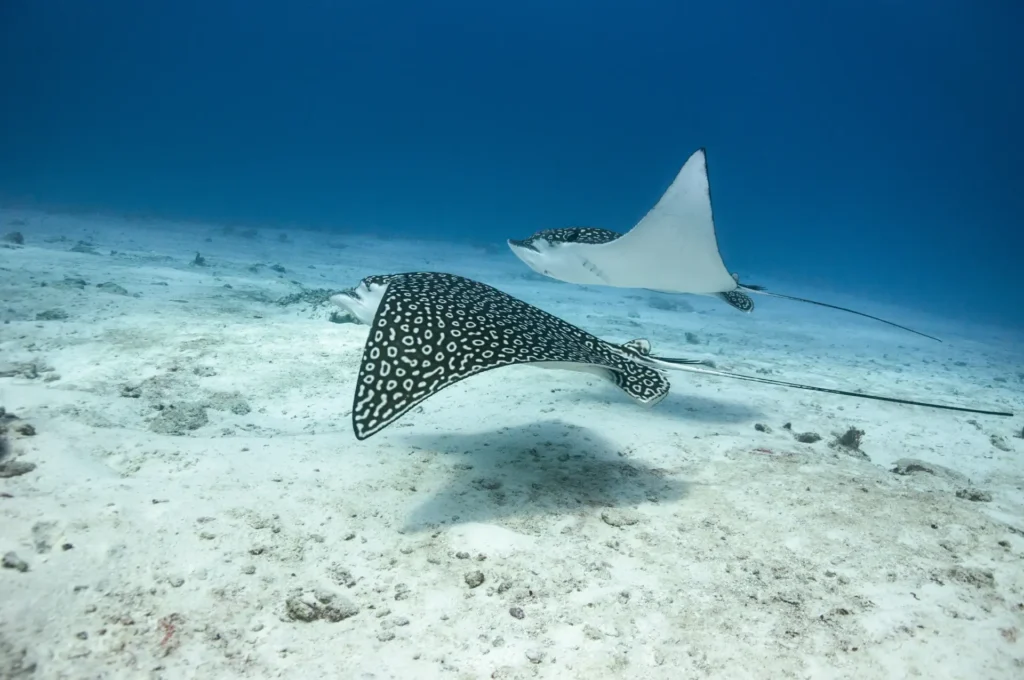
4. Eagle Ray (Aetobatus narinari) (Occasional Sightings)
🦅 Best Places to See Them: Maniguin Island, Yapak
🦅 Size: Can grow up to 3 meters (10 feet) in wingspan
🦅 Depth Range: 10–50 meters (33–164 feet)
The eagle ray is one of the most mesmerizing rays to witness underwater. Unlike stingrays, which tend to rest on the seabed, eagle rays are active swimmers, often seen soaring gracefully through the open ocean. They have a distinctive spotted dorsal pattern and a whip-like tail, making them easy to identify.
💡 Fun Fact: Eagle rays use their strong jaws to crush and eat crustaceans, mollusks, and small fish.
💡 Diver Tip: Eagle rays love open, deep-water environments, so keep an eye out in the blue while diving at Yapak or Maniguin Island.

5. Manta Ray (Mobula alfredi) (Rare in Boracay, Common in Nearby Destinations)
✨ Best Places to See Them: Ticao Pass (Masbate), Tubbataha Reefs, Apo Reef
✨ Size: Can reach up to 5.5 meters (18 feet) in wingspan
✨ Depth Range: 10–40 meters (33–131 feet)
While manta rays are not commonly seen in Boracay, divers hoping to see these gentle giants can take trips to Ticao Pass or Tubbataha Reefs, where cleaning stations attract mantas in large numbers. Manta rays are filter feeders, gracefully gliding through the water as they consume plankton with their wide, open mouths.
💡 Diver Tip: If you’re looking to swim with mantas, plan a trip to nearby Ticao Pass or Tubbataha, where sightings are much more common.
Why Are Rays Important to Boracay’s Marine Ecosystem?
Rays play a critical role in maintaining ocean health by:
✅ Regulating prey populations – Rays help control populations of crustaceans, mollusks, and small fish, keeping marine food webs balanced.
✅ Contributing to seafloor health – As bottom-dwellers, stingrays stir up sediment, which aids in nutrient cycling for smaller organisms.
✅ Supporting coral reefs – Eagle rays and mantas often travel between reef systems, helping spread nutrients across large areas.
Protecting rays is crucial for keeping Boracay’s waters healthy and ensuring sustainable diving experiences for future generations.
Where to See Rays While Diving in Boracay
If you want to increase your chances of spotting rays, here are the best dive sites to visit:
📍 Crocodile Island – Best for blue-spotted stingrays and ribbontail rays.
📍 Channel Drift – Occasionally spotted rays resting on sandy bottoms.
📍 Tambisaan Reef – A great spot for shallow-water stingrays.
📍 Yapak – Eagle rays and marble rays are sometimes seen in deeper sections.
📍 Maniguin Island – One of the best places for occasional eagle ray encounters.
Final Thoughts: The Majesty of Rays in Boracay
Whether gliding through the blue or resting on the sandy seabed, rays are some of the most fascinating marine creatures a diver can encounter. Boracay offers diverse opportunities to observe different species, from the small and colorful blue-spotted stingray to the majestic eagle ray patrolling deep waters.
At New Wave Divers Boracay, we offer guided dives to the best ray-spotting locations, ensuring you get the most out of your underwater adventure.
Ready to dive with Boracay’s most graceful marine creatures? Book your dive with New Wave Divers today!

